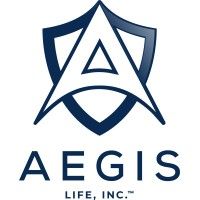预约演示
更新于:2025-05-07
RSV-001
更新于:2025-05-07
概要
基本信息
药物类型 mRNA编码的抗体 |
别名 |
靶点- |
作用方式- |
作用机制- |
治疗领域 |
在研适应症 |
非在研适应症- |
原研机构 |
在研机构 |
非在研机构- |
权益机构- |
最高研发阶段临床前 |
首次获批日期- |
最高研发阶段(中国)- |
特殊审评- |
关联
100 项与 RSV-001 相关的临床结果
登录后查看更多信息
100 项与 RSV-001 相关的转化医学
登录后查看更多信息
100 项与 RSV-001 相关的专利(医药)
登录后查看更多信息
4
项与 RSV-001 相关的文献(医药)2021-09-01·Poultry Science2区 · 农林科学
Improving the post-thaw quality of rooster semen using the extender supplemented with resveratrol
2区 · 农林科学
ArticleOA
作者: Hezavehei, Maryam ; Sharafi, Mohsen ; Rezaie, Fereshteh Sadat ; Shahverdi, Abdolhosein
2016-11-01·Journal of Craniofacial Surgery4区 · 医学
Effect of Local Rosuvastatin Administration on Calvarial Bone Defects
4区 · 医学
Article
作者: Önger, Mehmet E ; Türer, Akif ; Çelik, Hakan H ; Balli, Umut ; Türer, Çiğdem C ; Durmuşlar, Mustafa C
2015-10-01·BMJ Open4区 · 医学
Safety and immunogenicity of novel respiratory syncytial virus (RSV) vaccines based on the RSV viral proteins F, N and M2-1 encoded by simian adenovirus (PanAd3-RSV) and MVA (MVA-RSV); protocol for an open-label, dose-escalation, single-centre, phase 1 clinical trial in healthy adults
4区 · 医学
ArticleOA
作者: Scarselli, E ; Capone, S ; Pollard, A J ; Cortese, R ; Voysey, M ; de Lara, Catherine ; Vitelli, A ; Klenerman, P ; Nicosia, A ; Green, C A ; Thompson, A J ; Sande, C S
100 项与 RSV-001 相关的药物交易
登录后查看更多信息
研发状态
10 条进展最快的记录, 后查看更多信息
登录
| 适应症 | 最高研发状态 | 国家/地区 | 公司 | 日期 |
|---|---|---|---|---|
| 呼吸道合胞体病毒感染 | 临床前 | 美国 | 2023-12-08 |
登录后查看更多信息
临床结果
临床结果
适应症
分期
评价
查看全部结果
| 研究 | 分期 | 人群特征 | 评价人数 | 分组 | 结果 | 评价 | 发布日期 |
|---|
No Data | |||||||
登录后查看更多信息
转化医学
使用我们的转化医学数据加速您的研究。
登录
或

药物交易
使用我们的药物交易数据加速您的研究。
登录
或

核心专利
使用我们的核心专利数据促进您的研究。
登录
或

临床分析
紧跟全球注册中心的最新临床试验。
登录
或

批准
利用最新的监管批准信息加速您的研究。
登录
或

生物类似药
生物类似药在不同国家/地区的竞争态势。请注意临床1/2期并入临床2期,临床2/3期并入临床3期
登录
或

特殊审评
只需点击几下即可了解关键药物信息。
登录
或

生物医药百科问答
全新生物医药AI Agent 覆盖科研全链路,让突破性发现快人一步
立即开始免费试用!
智慧芽新药情报库是智慧芽专为生命科学人士构建的基于AI的创新药情报平台,助您全方位提升您的研发与决策效率。
立即开始数据试用!
智慧芽新药库数据也通过智慧芽数据服务平台,以API或者数据包形式对外开放,助您更加充分利用智慧芽新药情报信息。
生物序列数据库
生物药研发创新
免费使用
化学结构数据库
小分子化药研发创新
免费使用
